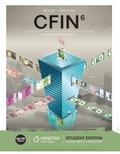
The graph which shows the relationship between yields and maturities on a particular date is known as the yield curve, and this relationship is simply called the term structure of securities. The yield curve could be upward sloping where the long-term yields are higher than the short-term yields and is also known as normal yield curve. However, if the long-term yields are lower than the short-term yields then the slope with be downward sloping and is referred to as inverted or abnormal yield curve.
Interest rate consists of risk-free rate, real risk-free rate and inflation premium, and a risk premium such as liquidity risk (LP), default risk (DRP) and maturity risk (MRP). Since, real risk-free rate generally remains constant, it is the changes in the expectation of risk premium and inflation which affects the interest rate of the security. Hence, inflation expectation is the most significant reason for changes in yield and determination of yield curve.
Interest rate or yield on treasuries can be determined using the below equation, where default risk premium (DRP) and liquidity premium (LP) is zero, as treasuries are considered as liquid and default free investment. Maturity risk premium (MRP) is there as they have differing maturity securities issued.
Expectation theory states that the shape of the yield curve depends on the expectation of future inflation rate and hence an increasing inflation rate will result in an upward sloping curve whereas a decreasing rate would result in downward sloping curve.
Yield on any bond is the average of the interest rates that is expected during its life and hence the yield of a bond with n year to maturity will be as below:
Here,
Interest rate for the first year of bond’s remaining life is “
Interest rate for the second year of bond’s remaining life is “
and so on.
Inflation rate in Year 2019,2020 and 2021 is 2.1%,1.5%and 0.9% respectively. Real risk-free rate is 2% and the bonds are risk free.
Want to see the full answer?
Check out a sample textbook solution
- General Finance Please don't answer i posted blurred image mistakely. please comment below i will write values. if you answer with incorrect values i will give unhelpful confirm.arrow_forwardno ai Please don't answer i posted blurred image mistakely. please comment below i will write values. if you answer with incorrect values i will give unhelpful confirm.arrow_forwardFinan Please don't answer i posted blurred image mistakely. please comment below i will write values. if you answer with incorrect values i will give unhelpful confirm.arrow_forward
- see itPlease don't answer i posted blurred image mistakely. please comment below i will write values. if you answer with incorrect values i will give unhelpful confirm.arrow_forwardNo use ai. if image is blurr or data is not showing properly then dont answer i will sure deslike. please comment i will write values.arrow_forwardDon't use ai. if image is blurr or data is not showing properly then dont answer i will sure deslike. please comment i will write values.arrow_forward
- no ai Please don't answer i posted blurred image mistakely. please comment below i will write values. if you answer with incorrect values i will give unhelpful confirm.arrow_forwardFinance SubjPlease don't answer i posted blurred image mistakely. please comment below i will write values. if you answer with incorrect values i will give unhelpful confirm.arrow_forwardcalculate ratios for the financial statment given and show all working manually: 3. TIE Ratio 4. Cash Coverage Ratioarrow_forward
 Intermediate Financial Management (MindTap Course...FinanceISBN:9781337395083Author:Eugene F. Brigham, Phillip R. DavesPublisher:Cengage LearningPrinciples of Accounting Volume 1AccountingISBN:9781947172685Author:OpenStaxPublisher:OpenStax College
Intermediate Financial Management (MindTap Course...FinanceISBN:9781337395083Author:Eugene F. Brigham, Phillip R. DavesPublisher:Cengage LearningPrinciples of Accounting Volume 1AccountingISBN:9781947172685Author:OpenStaxPublisher:OpenStax College




